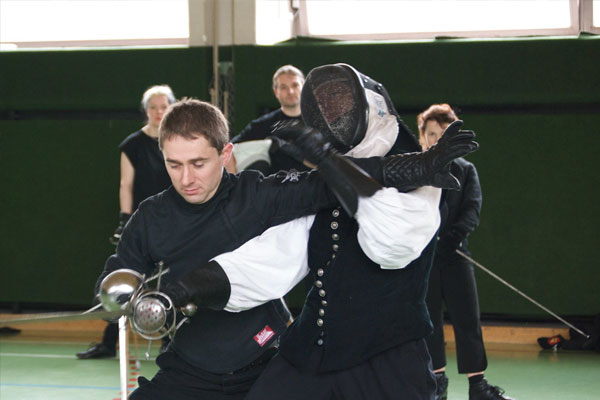Martial Arts Near Me
Historical European Martial Arts
Hema, also known as Historical European Martial Arts, is a modern movement that has gained significant popularity in recent years. It focuses on the study, interpretation, and revival of martial arts systems originating from Europe, with an emphasis on historical combat techniques, weapons, and armor. This unique discipline offers practitioners an intriguing insight into the past, allowing them to explore diverse cultures and combat strategies that shaped Europe's rich history.
The origins of Hema can be traced back to the medieval and early modern periods when various martial arts systems flourished across Europe. During this time, knights, mercenaries, and soldiers honed their skills in combat, utilizing a wide range of weapons like swords, axes, polearms, and daggers. These martial arts were passed down through generations via oral tradition, manuscripts, and instructional treatises, offering valuable insights into historical European combat techniques and philosophies.
The study of Hema often starts with the examination of historical sources, such as fencing manuals and treatises that have survived over the centuries. These manuals, written by skilled combatants and masters of the time, provide detailed instructions and illustrations on various forms of combat, including unarmed combat, armed dueling, and battlefield tactics. They offer valuable insights into the techniques, strategies, and principles employed by European warriors throughout history.

One of the most well-known and influential fencing masters is Johannes Liechtenauer, who lived in the 14th and 15th centuries. His teachings and philosophy, known as the Liechtenauer tradition, form the basis of many Hema practices. Liechtenauer emphasized principles such as timing, distance, and efficient body mechanics, believing that mastery of these fundamentals would lead to success in combat.
As Hema gained traction in the modern era, numerous practitioners began translating and interpreting historical texts, aiming to reconstruct and practice the fighting arts of the past. This process involved in-depth research, experimentation, and practical application to bring these ancient combat systems back to life. Various Hema schools, clubs, and organizations formed around the world, fostering a community dedicated to the study of historical European martial arts.
In addition to the study of manuscripts, Hema practitioners also engage in sparring and competitive bouts to refine their skills and test their interpretations of historical martial arts. This aspect sets Hema apart from traditional martial arts, as the focus is not solely on form or aesthetics but also on practicality and historical accuracy. The use of protective gear, such as fencing masks, padded jackets, and padded gloves, allows for a safe and controlled training environment.
Hema encompasses a broad range of weapon systems, including longswords, rapiers, sabers, polearms, and even grappling techniques. The versatility and diversity of weapons and techniques provide practitioners with a well-rounded understanding of historical European combat. Depending on their preferences, Hema enthusiasts can specialize in a particular weapon or explore multiple disciplines to gain broader insights into the art.
The Hema community continues to grow, with an increasing number of practitioners, scholars, and enthusiasts delving into historical combat and promoting the art around the globe. Today, various Hema events, tournaments, and workshops take place worldwide, offering opportunities for practitioners to showcase their skills, exchange knowledge, and build camaraderie. These gatherings foster a dynamic environment that fuels the growth and development of the Hema movement.
Apart from its practical and competitive aspects, Hema also plays a role in historical research, offering valuable insights into the social, cultural, and technological aspects of the past. By analyzing historical combat techniques, researchers gain a deeper understanding of the mindset, values, and societal structures of bygone eras.
The revival of these ancient martial arts brings the past to life and enables a better understanding of the warriors who shaped Europe's history. Through the study, interpretation, and practice of Hema, enthusiasts continue to ensure that these valuable traditions are preserved and passed down to future generations.